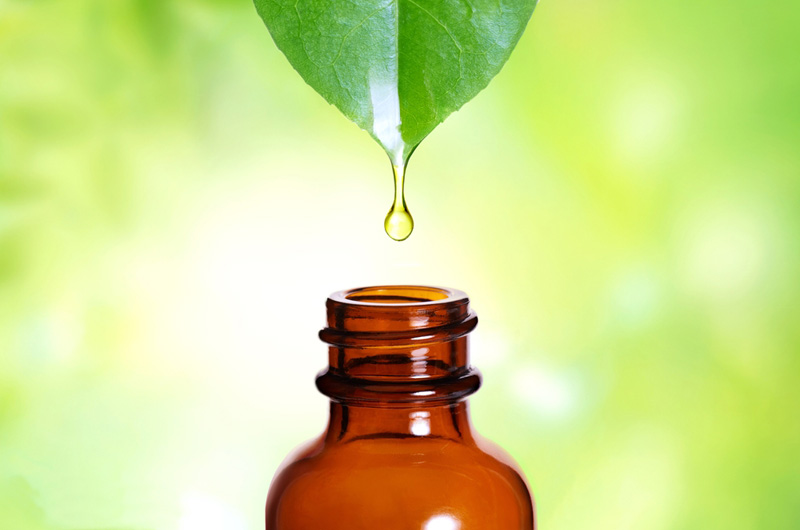SUBSCRIBE TO MY FREE ESSENTIAL OILS NEWSLETTER, "THE ESSENTIAL OILS Rx"
How to Dilute Essential Oils
for Topical Use
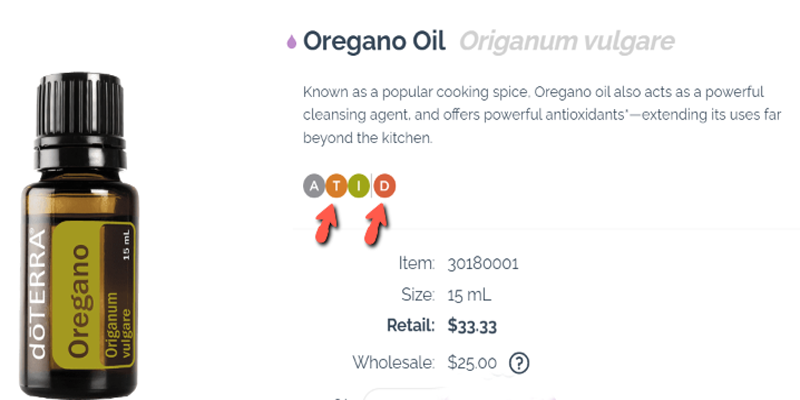 Picture of Oregano Oil taken from the doTERRA website. Note the "T" and "D" designators indicating that you can use this oil topically but must always dilute it before applying it to the skin
Picture of Oregano Oil taken from the doTERRA website. Note the "T" and "D" designators indicating that you can use this oil topically but must always dilute it before applying it to the skinWhile some essential oils can be applied to the skin without dilution, others need to be diluted. In addition, many essential oils should be diluted when used on sensitive skin and when used topically on young children, cats and dogs.
It is important to always use CPTG oils (Certified Pure Therapeutic Grade) to avoid the problems with adulteration and contamination that can occur with other essential oils.
CPTG oils that are safe to use topically (in humans) are designated with a "T" on the product page of the doTERRA website. Those that always require dilution prior to topical application will have a "D" designation on the product page. Those that should be diluted prior to application on sensitive skin have an "S" designation. And those that typically do not require dilution prior to application on adults are designated "N" (for "neat").
In the image above, note that Oregano oil has a "T" and a "D" designation indicating that it is safe to apply topically but should always be diluted prior to topical application.
While those CPTG oils that have an "N" designation are safe to apply directly to the skin of most adults, I always recommend diluting essential oils when using them on younger children. In addition, essential oils should always be diluted with applied topically to cats or dogs.
Recommended Dilutions for Kids and Pets
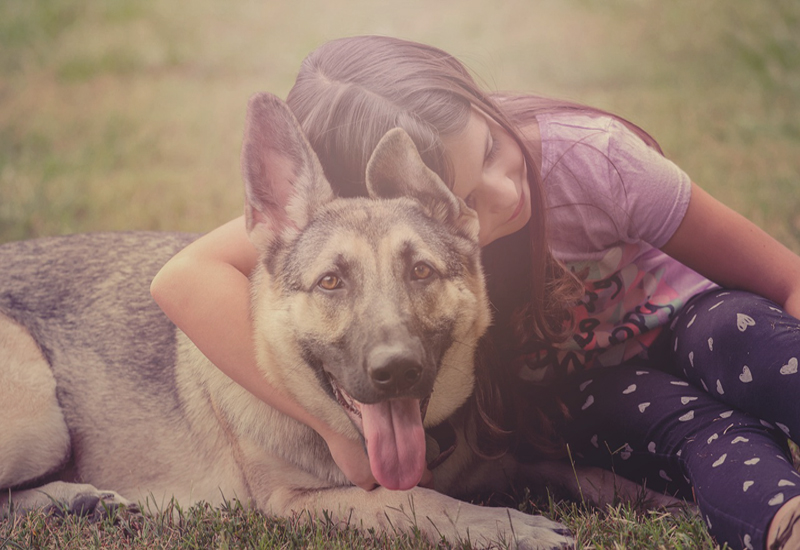
For Young Children
For younger children it is usually advisable to dilute essential oils prior to applying them to the skin. As a conservative rule of thumb I use a. . .
- 1% dilution for children under the age of 1 year (Or sometimes a 0.05% for infants)
- 2% dilution for 1-5 year olds
- 5% dilution for 6-11 year olds
Children 12 years and older are generally treated as adults.
For Cats
For topical application of essential oils on cats, the vet I follow (Janet Roark DVM) recommends using a 0.25% to a maximum 2% dilution. She also recommends applying essential oils to cats intermittently rather than on a daily basis.
Remember that With cants you want to avoid topical application of essential oils containing phenols, eugenols and d-limonene. These include the citrus oils (lemon, lime, grapefruit, orange, tangerine and bergamot), birch, melaleuca (tea tree), peppermint, spearmint and wintergreen oil. (Click on this link to learn more about safely using essential oils with cats.)
For Dogs
For topical application of essential oils in dogs, Dr. Roark recommends using 0.5% dilution for dogs weighing 20 pounds or less and any time you are using a hot oil such as cassia, cinnamon, clove, melaleuca, oregano and thyme regardless of the dog’s size or weight.
When using gentler oils in larger dogs Dr Roarke recommends using a 3% dilution. (Click on this link to learn more about safely using essential oils with dogs.)
NOTE
When applying essential oils to anyone – adult, child, dog or cat - remember: More frequent application of a small amount of oil is preferable to using a less frequent application of a larger amount.
Formulas for Diluting Essential Oils for Topical Use
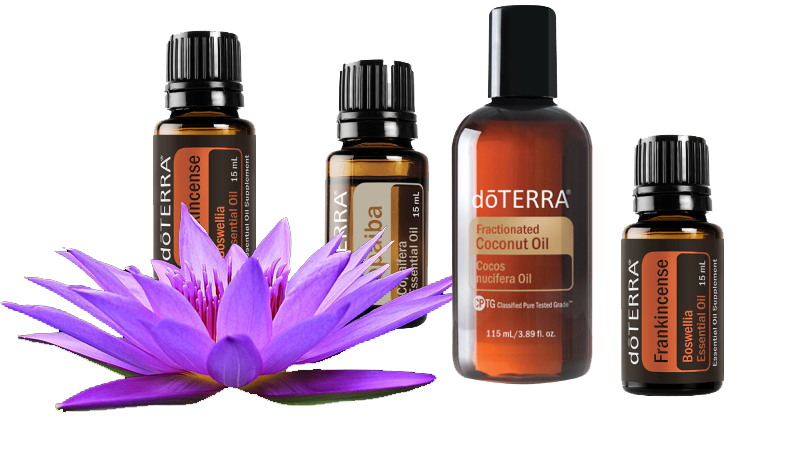
Diluting Oils with Liquid Carrier Oils
To dilute an essential oil using another liquid oil such as
fractionated coconut oil, remember that one milliliter (ml) contains 20 drops
of liquid.
So, to determine how many drops of essential oil you need to achieve a particular dilution, start by multiplying 20 by the total number of milliliters you are making up (This will be determined by the capacity of the bottle or container you are using).
Then multiply that number by the per cent dilution you want and divide by 100. So, the formula is. . .
(20) x (total number of mls you are making up) x (% dilution) / 100
Example of a Simple Dilution
Let's say you are filling a 10 ml roller bottle and want a 2% dilution. The number of drops of essential oil you would use would be ...
20 X 10 X 2 = 400/100 = 4 drops.
Add 4 drops of the essential oil to your 10 bottle and then fill the bottle with a carrier oil. And voila! You now have 10 mls of a 2% dilution of the essential oil you are using!
Diluting Essential Oils in Water-Based Gels
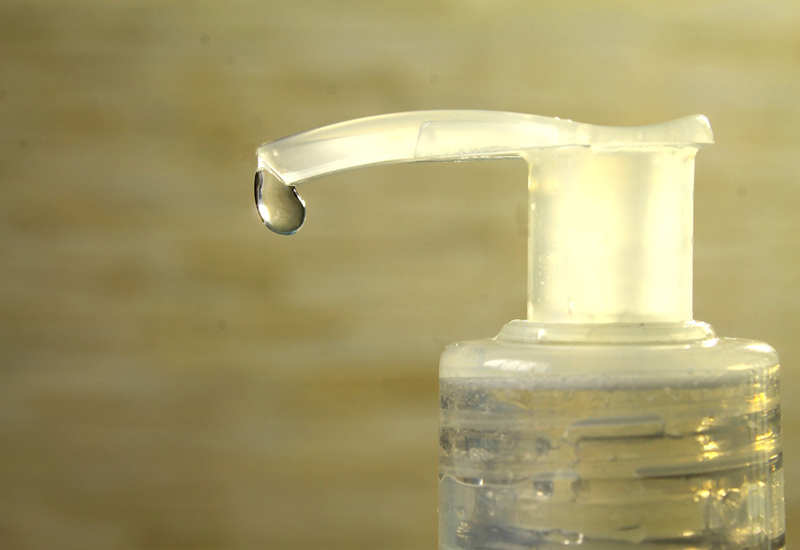
Water based gels, like Aloe Vera gel are thin and their gram
weight is about the same as that of oils. So, if you are mixing essential oils
with a water based gel you can just use the formula above with no
changes.
TIPS FOR USE: To Soothe Sunburn and Other Minor Burns, I like to use an aloe vera gel base with lavender essential oil. Keep the gel in the refrigerator for an additional cooling effect.
Diluting Essential Oils in Creams
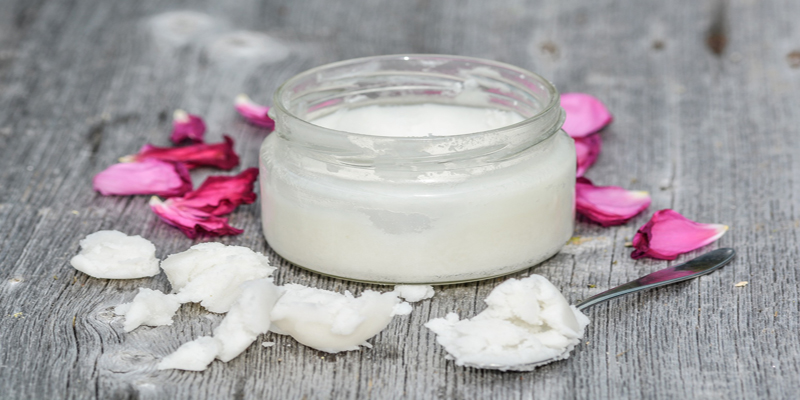
For thicker creams you want to use 10-20% more essential oil than
calculated in the previous formula. For example, to get a 3% dilution in 50 ml
container for a cream, you would use the formula above and then add 10-20% more
oil.
Example of Dilution for a Cream
To get a 3% dilution of cream using a 50 ml container, you would use the formula above and then add 10-20% more oil.
20 x 50 x 3 / 100 = 30 gtts.
10% of 30 is 3 and 20% of 30 is 6 so you want to use between 33 (30+3)and 36 (30+6) drops of essential oil.
TIPS FOR USE: Regular Coconut Oil makes an easy and convenient cream base. It provides protection from sunburn - and it’s good for your skin, too!
To use it, melt regular coconut oil in warm water, add the essential oil to achieve the desired dilution, and then place the container in the fridge to harden.
For More Information

For more information on the safe use of essential oils in kids, cats and dogs see the following articles
1. Are Essential Oils Safe For Kids?
2. Are Essential Oils Bad For Cats?
3.Are Natural Essential Oils Safe For Dogs?
For Recipes for Using Essential Oils in Kids refer to the book, "Smart Mom's Guide to Essential Oils: Natural Solutions for a Healthy Family, Toxin-Free Home and Happier You by Mariza Snyder MD
For Information on Using Essential Oils During Pregnancy, Birth and for Babies see the book, "Essential Oils for Pregnancy, Birth & Babies" by Stephanie Fritz, LM, CPM
To Find Essential Oil Recipes for Addressing Various Conditions in Both Dogs and Cats refer to the book, 'SpOIL Your Pet: A Practical Guide to Using Essential Oils in Dogs and Cats' by Mia Frezzo, DVM,
What's Next?
This concludes the Series on Essential Oil Basics. If you missed an article in this series, click on the "The Basics" button on the navigational bar at the top of this page.
To Move onto the Next Series on Essential Oil Safety which includes general tops on the safe use of essential oils as well as how to safely use essential oils in kids, dogs and cats click on this link: Safe Use of Essential Oils.
To Learn More about Essential Oil Quality including the problem with adulteration, contamination and sourcing as well as how to select an essential oil company click on this link: Essential Oil Quality.

Want to try doTERRA essential oils or essential oil products?
Click on this link to get a FREE membership and WHOLESALE prices for a full year! Get My Free doTERRA Membership.

